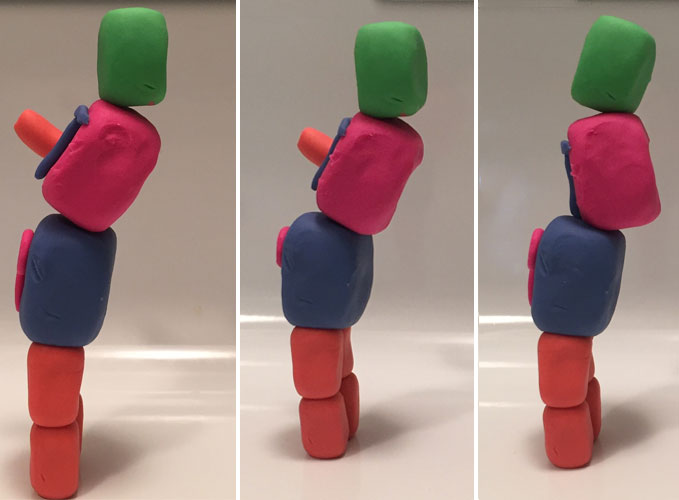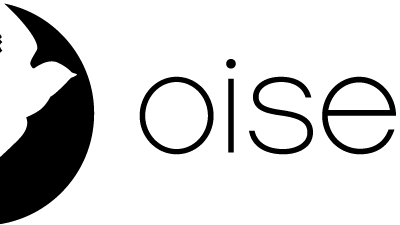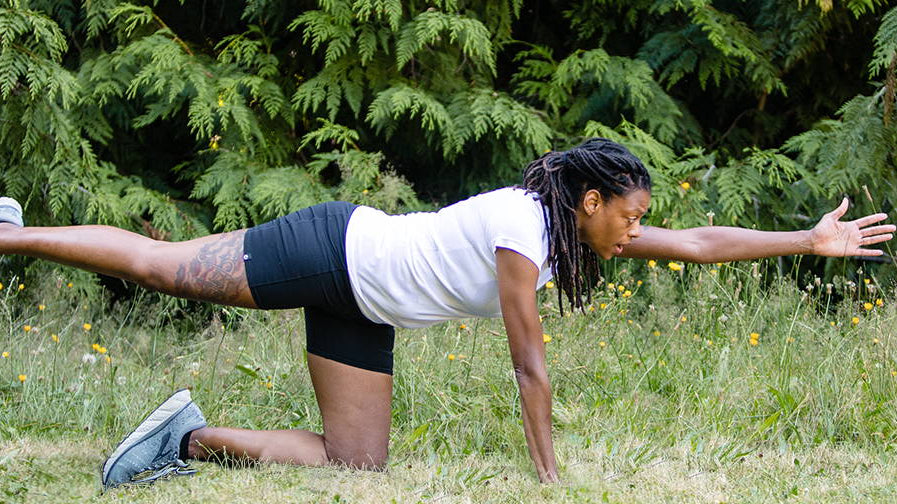We're excited to introduce to you Nicole Bulow! A member of our Volée and a Physical Therapist in the Seattle area. Nicole’s passion for athletics and expertise in sports medicine has led her to helping Olympians in various sports, to everyday runners (like us!). She’s sharing some of her wisdom here with us, and will also be visiting in person at the Oiselle Store for Thursday Night Flight Club on August 18th, all are welcome. Take a few minutes and use this test to guage your body alignment and increase efficiency.
If you were a stack of blocks would you stand? The human body is designed to be self-supported. Every bone is intended to stack on the bone below it, like a stack of well-positioned blocks, making standing effortless. Efficient posture results in efficient stability and movement, which can enhance performance and prevent injury.

Think about the last time you were standing – did it feel effortless? I suspect not…so why are you working so hard to do something that should be easy?
I wish the answer were simple, but the truth of it lies in the history that’s written within your body. Past injuries and postural habits take your body out of a state of equilibrium. If your body is out of equilibrium (and most of ours are!), you will not perform at your best and you may be plagued by chronic injuries.
But there’s hope! Together, we can begin to re-write your body’s history and create new postural habits. The first step to restoring symmetry is to bring awareness to your body position and holding patterns.
TRY THIS
- Grab your phone, stand up, and snap a photo of yourself from the side (its best to have someone else take the picture).
- Before you look at the photo do a quick scan of your system from the bottom up taking note of areas of tension, discomfort, and asymmetry.
- Pay particular attention to where your weight is distributed in your feet and the position of your pelvis, spine, and rib cage.
WHICH STACK OF BLOCKS ARE YOU?
Based on the Saliba Postural Classification
Compare your photo to the images below. If you had to carry a 100lb sack of flour on your head where would the force go? (hint: it should be through your feet!)

Efficient Posture

Left to right: Vertical Posterior, Posterior Posterior, Posterior Anterior
THE GUIDE
Efficient Posture
Thoracic block (T) is stacked over the Pelvic block (P) and both are vertical.
Load is transmitted through your rib cage, into your abdomen and pelvic floor, through your legs and into your feet.Vertical Posterior #1
Thoracic block is vertical over the pelvic block, but tipped back/chest lifted.
This load distribution can result in mid and low back symptoms.Posterior Posterior #2
Thoracic block is behind the pelvic block and tipped back/chest lifted.
With this postural dysfunction, individuals can end up with low back and SI joint dysfunction.Posterior Anterior #3
Thoracic block is behind the pelvic block and tipped forward.
If this is you, you may experience mid-back and neck discomfort or stiffness.
Now for the fun part…what exactly are you going to do about it?
THE GOAL
To train optimal posture in static postures (sitting/standing) to allow you to maintain efficient posture while performing dynamic activities, like running!
THE FIX
How to get the blocks stacked.
- Awareness
- Neuromuscular Re-education – Restoration of the brain body connection to develop an efficient postural habit
- Mechanical Corrections – restoring efficient mobility to the joints, muscles, fascia and tissues in your body to allow for efficient alignment (more on this to come later)
NEUROMUSCULAR RE-EDUCATION
Assumption: Your body has the ability to achieve efficient posture your brain just doesn’t know it.
We will start this process sitting. In sitting, we don’t have to worry about our legs and feet and you will have ample opportunity to practice as many of us spend our days sitting.
EFFICIENT ALIGNMENT IN SITTING
- Sit on a surface in which your knees are slightly below your hips and your feet are firmly planted on the floor. You should be sitting with 2-3 inches between the front of the chair and the front of your pelvis
- As you did in standing, do a quick scan of your natural sitting posture. Be honest. Sit how you normally sit.
- Keeping your shoulders stacked over your pelvis, roll your pelvis 3-4 times forward and backward gaining an appreciation of your available range of motion, the effort to achieve each position and any discomfort.
- Find your happy place. The mid range between flexion and extension. You should now be sitting on your sit bones.
Anatomy break #1: your sit bones (ischial tuberosities) are round. Round things like to roll. If you sit here, you will roll into a flexed/slouched position...

Left to right: flexed spine "the good ol' slouch," the extended spine, efficient spine!
- Keep your spine relaxed and hinge through your hips to come up and forward. You should now be sitting on the front edge of your ischial tuberosities and your pelvic floor.
Anatomy break #2: Your pelvic floor is the foundation of your core. It’s easier for a muscle to contract when there is resistance provided to it. Resistance is provided to your pelvic floor through the weight of your body and organs.
- Now that you are stacked more efficiently you need to anchor yourself to this position to allow your skeleton to support you.
- Relax your abdomen. Yep. Let. It. Go. No sucking in. Feel your low back lengthen and tail bone drop.
Anatomy break #3: Bracing your core inhibits your intrinsic, automatic core stabilizers. To tap efficiently into your core you have to relax!
- Take a deep breath in to lift your rib cage, then as you exhale relax your rib cage onto your stomach so that the front of your rib cage lines up with the front of your pelvis.
- You did it! Your blocks are stacked! Your skeleton and automatic core are now supporting you and your weight is more distributed into your pelvic floor (50%) and your legs and feet (about 25% each).
- Time for another self scan. What changes do you notice?
- Now undo it all and go back to your old sitting self. Scan again. Compare your new sitting self with your old sitting self.
- The new you will feel different and you may not be sure you like the new you, but give it some time. You’re new alignment will grow on you and the changes you notice, both good and bad, will help guide you to correcting your mechanical impairments and improving your brain body connection.
“Today is your day! You’re mountain is waiting. So…get on your way!” – Dr. Seusss
Improving alignment is all about tuning into your body and repetition. You aren’t going to be a faster runner if you don’t practice running faster. Likewise, your posture isn’t going to improve if you don’t practice being in efficient alignment.
There is no recipe. This is a framework to help guide you. Play around. Can you distribute your weight through your pelvic floor and feet in standing? What about different sitting surfaces? How about when you are doing squats or in yoga?
Make a goal to check in with your posture at least 3 times per day for the next week. This is step one to re-writing your body’s history. Have fun with it!
I’d love to hear what you find out. Share your experiences with me and other members of the Oiselle community. You can find me on Twitter and Instagram #humanefficency
- Nicole Bulow









